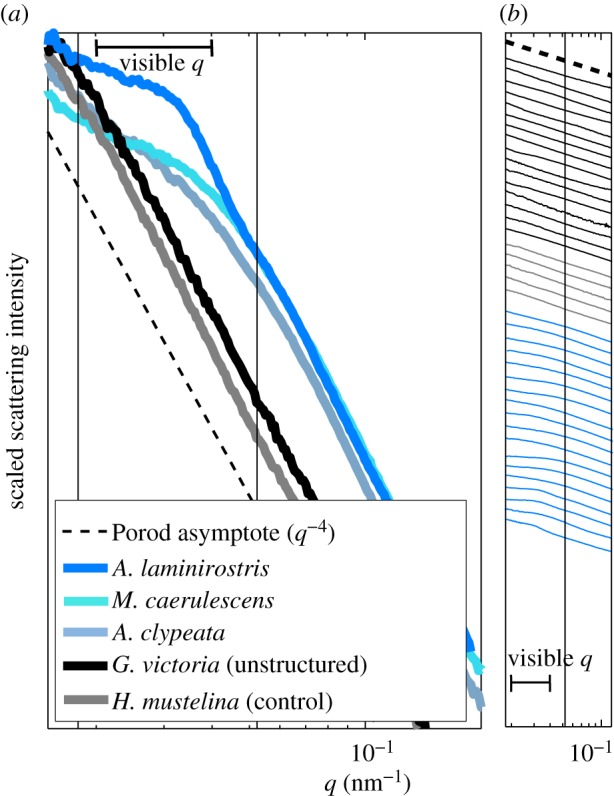Figure 4.

SAXS structural diagnosis of weakly structured, control and unstructured feather barbs. (a) Representative azimuthal SAXS profiles for the rudimentary sphere-type nanostructure (‘structured*’, electronic supplementary material, table S2) in A. laminirostris (Ramphastidae), and the rudimentary channel-type nanostructures (‘structured’, see electronic supplementary material, table S2) in Melanotis caerulescens (Mimidae) and Anas clypeata (Anatidae) as well as unstructured feather barbs from Goura victoria (Columbidae) and Hylocichla mustelina (Turdidae). The azimuthal profiles are normalized to one along the intensity axis for ease of comparison. (b) The azimuthal SAXS profiles for 18 weakly structured (blue lines), five control (grey lines) and 16 unstructured feather barbs (black lines) on a semi-log scale. The azimuthal profiles are vertically displaced along the intensity axis for clarity. The azimuthal scattering profiles of the control feathers, many purple, magenta and bright white feathers as well as several marginally blue-grey (black lines) feathers did not deviate from Porod's Law even at low q (<0.04 nm−1). Thus, these feathers do not possess any underlying barb nanostructure, ruling out any contribution of constructive interference to their observed colours. The azimuthal SAXS profiles from feathers with mainly slaty blue-black to pale greyish-blue colours show slight to moderate deviations from Porod's Law at low q, with these features resembling a shoulder rather than a peak. Nevertheless, the spatial correlations that these feather barbs do possess appear to be at the appropriate length scales to be able to produce visible structural colours through interference. (a,b) The thick horizontal line indicates the range of spatial frequencies relevant for avian visible structural colour production.
